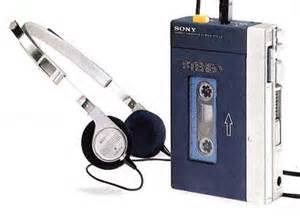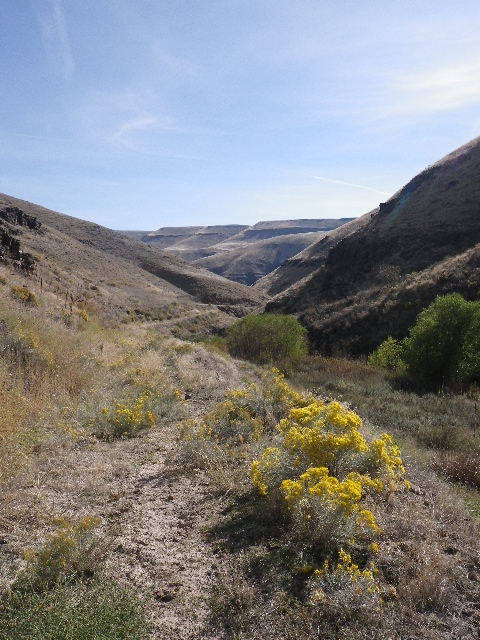The current work in progress, Trail of Second Chances, is a novel about Becca Hawthorne, an elite teenage runner attending a training camp high in the mountains of Montana, where the wild things live. This is Chapter 1 - as with other work I post, this is unedited and subject to change...
Plan to have it ready by summer next year... if you see typos, feel free to let me know and I'll fix it. Thanks!
Trail of Second Chances, Chapter 1
Becca felt sweat roll down her temples as the plastic mask threatened to suffocate her.
“Don’t quit,” her father Rob said in a quiet voice. He stood beside her as she pounded away on the treadmill.
She gave him a withering look and continued to run. On the other side of him sat sixty-three runners attending the Bitterroot Running Clinic. They were arranged in a semi-circle to watch her get measured for oxygen uptake – how much air she could process while she ran. Runners shortened it to VO2 max and it was one of the holy grails of runner performance.
The plastic mask was attached to tubing, sending the used air to an analyzer that would beep once when she reached the point where she couldn’t use any more air. When she hit exhaustion, she thought. The thought triggered another bout of claustrophobia and the mask pressed tighter to her cheeks.
“Keep digging, Becca, you can do this.”
On the other side of the treadmill, monitoring the equipment was Jim Eagle, cross country coach at Bridger College in Missoula, her father’s best friend, and, unofficially, her uncle.
“You’re doing great, Becca. Just hang in a little longer,” said Eagle, his dark eyes scanning the instruments. A former Olympian in the 5,000 meters, the coach was a small, intense man and a full-blooded Nez Perce Indian. He was an alternate when the man ahead of him, a young hotshot from UCLA, blew out both an Achilles’ tendon and his running career at the same time in a pick-up basketball game.
The incline on the treadmill went up another percentage point and Becca struggled to keep up. Gulping air, she tucked her chin down as her thighs started to burn. The acid was building. This was the third time she had been tested – her father volunteered her every year when she came to camp – and she knew that it was almost over as she felt her chest heave in the effort to keep up with the relentless pace of the treadmill.
This is the way the stupid mouse feels, she thought, a picture of a small white rodent chasing through a maze while people is white lab coats took notes. The sweat was coming off in rivulets, and her shirt was plastered to her back. She felt the wobble in her shoulders and tried to hide it.
“Keep going,” said Rob Hawthorne just as the machine signaled the end of the test. The deck of the treadmill began to drop as the belt slowed. Becca slowed with it.
“Can I take off the mask?” she asked, panting, voice muffled by the plastic. She looked at Eagle, eyes pleading.
“Sure, go ahead,” he replied.
She reached behind her head and struggled to get the elastic bands at the back loosened while she kept running, dropping pace to match the slowing belt. It clung to her sweaty face before detaching with a sucking pull. Becca, her lungs already in recovery, dragged in a great, gasping breath.
The treadmill slowed to a stop and Becca stepped off, legs unsteady on the motionless floor. Her dad handed her a water bottle and she took several gulps, the icy water sending a welcome chill down her throat. As she was reaching for a towel to wipe off with, Eagle threw the data from her test up onto a large screen monitor.
Her eyes, along with those of the other runners, tracked to the screen where three lines were traced, blue for oxygen, red for carbon monoxide and yellow for heart rate. Where the red and blue crossed is where it hurt.
“You’ve improved,” murmured Rob analyzing the graph. “But you still have some room to grow.” He glanced at her. “Good job.”
She threw her towel in the corner and went to sit with the other campers.
Eagle left the monitoring equipment and stood by the monitor.
“Okay, here is how this works.” Quickly he explained the lines and what the axes represented - oxygen consumption on one axis, time on the other.
“As you can see, Becca was running easily and had no trouble get enough air in early – see the gap?” he asked pointing to the chart at the five minute mark, “but when we got to the end of the test, that gap narrowed until the lines crossed.”
Eagle looked over the group. “Uptake isn’t the only factor we look at in running and some of you are probably very accomplished runners even without high uptakes. Running economy – how efficient you are – makes a huge difference.
“Becca has both. Her scores here, a 68.7 VO2 max is superior, especially for a high school athlete. Elite, well-trained females can get to about 75, guys can get to about 85 though scores over 90 have been recorded.”
He thumbed the clicker in his hand and the screen revealed another chart. Becca recognized it and saw the point where the panic attack almost caused her to fall on the treadmill her freshman year.
“This is Becca two years ago. As you can see, she’s improved a great deal. That’s the good news. You can improve uptake. The bad news is that you can only improve it this much,” he said holding his hands apart about a foot. “That’s why we’re focusing on form this year. The base miles and speed work are great and you need those but most of you get it in your programs already.”
He nodded to Rob Hawthorne. “The goal this year is to help you make those miles and the speed more effective by helping you become more efficient. Coach Hawthorne, for those that don’t know him, is one of the top coaches in Montana, and an expert at developing form.”
Heads turned to Becca’s dad but she kept her eyes on Jim Eagle. Her dad was an expert. She knew that, had listened to his instructions to drop her arms, tuck her elbows, increase her back kick until she was ready to puke.
Eagle smiled. “And I promise this is the last really nerdy thing we’re going to do here. Those of you who have been to the Bitterroot Running Clinic know the routine. We’ll have an easy run in the morning, followed by breakfast and a lecture. Afternoons are play time – we have the river right there so we can go tubing or swimming – or you can take a nap. We’ll do an evening run, a short one before dinner. That one is optional. Nights we relax and play some games.”
The athletes, a mix of young men and women, were getting restless. Eagle recognized the signs. His runners, some of them, were only a year or two older than Becca.
“Okay, enough,” he said. “Time to load up. Let’s head for the mountains.”
Runners scrambled to their feet, eager to be moving.
Her dad intercepted her as she walked toward the vans that would ferry them to the cabins.
“You did a good job in there,” he said. He reached for one of her bags. “Want some help?”
“I got it,” she said, half-turning away from him.
He withdrew the offending hand and started to walk with her. “This is a good opportunity for you.”
Becca turned her head to watch the first of the kids loading their sleeping bags and clothes into the back of the van, squashing the bags to make room.
“Becca.”
She stopped because he did and turned to face him.
“What, Dad? What’s a great opportunity?”
Annoyance lit his eyes briefly before disappeared with the smallest of head shakes. His tone had a slightly reproving edge as he said, “You’re an upperclassman now. You have a chance to show the younger kids,” he indicated them with his head, the gangly freshmen with the pinched scared look, “what it takes to be a runner. A lot of these kids, the girls at least, look up to you.”
She looked them over and then returned her gaze to her dad but staring at his shoulder, not his eyes.
“They shouldn’t.”
A sigh. “But they will and you can’t change that. It comes with the territory. There’s not a girl over there that doesn’t wish she could run like you. Probably,” he said but not boasting, “none of them ever will. They’ll never win State, they’ll never go to the Foot Locker Championships except as a spectator.” He waited while his words sunk in.
“So what am I supposed to do, Coach Hawthorne?” She regretted it as soon as she said it. At practice, he was Coach but the rest of the time he was just Dad.
“For starters, you might try acting like you want to be here,” he said. Annoyance crept into his voice.
Becca felt her lips tighten and her body get rigid. It’s you I don’t want here, she thought but she said, “I like the Clinic just fine. And I like the kids mostly.”
She could feel her dad staring at her, and she sneaked a glance at his face. The anger was gone, replaced by resignation.
“Okay,” he said, in a subdued voice, “I understand.” He spoke his words carefully. “You have any opportunity and it might be the only one you get. You don’t get a second chance at this.”
Becca shot an angry glance at him.
“Teach them that, if you can,” he said, his eyes intense, “to seize the opportunity.”
Becca leaned her head against the warm glass and felt the vibration of the engine, quick and steady, lulling her. Her father was right. The young runners, the girls, had all treated her like she was different and wouldn’t even look at her as they asked questions, half afraid that she would do…what?
That first Foot Locker, when she was a freshman and still scared, she had finished in a disappointing – to her and, she supposed, to her dad – 21st place. She remembered the look in the eyes of the girls – the nationally recognized racers, the ones that got written up in the running magazines. They all had the same look. She wondered if they shared the same feeling.
All I want to do is run…


